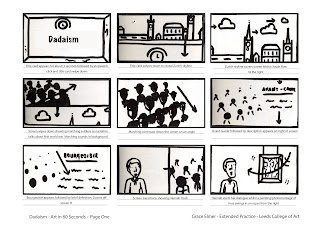The Big Impressionism Research Haul
What was Impressionism?
- Considered firstly distinctly modern movement in the art world
- It rejected the idea that the government controlled the exhibition of work in salons, which were a Paris biannual event
- The movement was shunned by prestigious art acadamies and institutes
- The Impressionists turned away from finer finishes and perfection and aimed to capture the impression of a piece, creating a sensory effect
- Many criticised the Impressionists as they felt their work was rough, amateur and unfinished
When and where did it take place?
- Start: Early 1870s to early 1890s
- Started developing in Paris in the 1860s
Who were the major artists?
- Camille Pissarro
- Edouard Manet
- Edgar Degas
- Pierre-Auguste Renoir
- Berthe Morisot
Berthe entered many of the prestigious "Salon de Paris" exhibitions and was highly spoken of, She was "described by Gustave Geffroy in 1894 as one of "les trois grandes dames" of Impressionism". She was a close friend and model of Manet, later marrying his brother. As a Christmas gift, Manet gave her an easel. Her paintings reflect the cultural and gender restrictions of the time, featuring women subjects and their daily lives. She was considered one of the great female pioneers of Impressionism which was controversial due to her gender (female artists were few and far between), and her choice of genre (Impressionism).
- Claude Monet
Monet was talented from a very young age, drawing caricatures and making pocket money from his art. His mother supported his decision to become and artist, however his father wanted him to inherit and take over the family grocery business.
Was Monet blind?
By 1907 he had painted many well-known paintings, but by then he had his first problem with his eyesight. He started to go blind. He still painted, though his eyes got worse. He wouldn't stop painting until he was nearly blind. In the last decade of his life Monet, nearly blind, painted a group of large water lily murals (Nympheas) for the Musee de l'Orangerie in Paris. - http://www.disabled-world.com/artman/publish/famous-blind.shtml
- Vincent Van Gogh (Post)
Van Gogh was famously Bipolar, suffering from both manic and depressive episodes. Although his life was tumultuous and difficult, his illness inspired many of his great works of the post-impressionist era and influenced many future artists.
He was an avid drinker, often indulging in absinthe, kerosene, and turpentine. His hallucinations and experiences were possibly made worse by his impulsive behaviour and substance abuse, contributing to his paintings.
"In 1889 van Gogh committed himself to a mental hospital. He could barely take care of himself. He still continued to paint and painted one of his most famous paintings Starry Night. Many of his paintings during this time featured cypress trees and lots of swirling colors."
Did he really cut off his ear?
Yes. After an argument with painter Paul Gauguin, van Gogh went home and cut off part of his left ear with a razor blade. He then wrapped up the ear in a cloth and presented it to a woman as a "present". He cut off "a portion of his right earlobe during a manic episode" - http://www.theartstory.org/artist-van-gogh-vincent-artworks.htm#pnt_2
What were the major works?
- Vetheuil in the Fog (1879)
- In a Park (1874)
- (Post Impressionism) Starry Night (1889) (Painted whilst Gogh was in mental asylum)
What were they trying to achieve?
- The Impressionists were trying to break away from the government's control over art and make a statement
- Abandon linear perspective and change their use of colours, opting for a lighter and more intense palette with thick, textured brushstrokes
- Stray away from the traditional styles and open the new century with an artistic revolution


















